Review for Burroughs - The Movie
Before I get into this review, please indulge me. It’s important that you know that I am, have long-been and probably will always be, unhealthily obsessed by William Burroughs. Which is not necessarily something to shout about. After all, the man was a junkie; overtly gay at a time when to be so was frowned upon; he shot and killed his wife; was banned in the UK and elsewhere for publishing what was seen as pornographic literature (and homosexual at that) and was a gnarled cynic and outsider whose love of guns led him to a second career late in life as a shotgun artist. In short, not everyone’s favoured dinner guest.
However, he was also a startlingly brilliant man who would, on occasion and on his own admittance, be possessed of genius, writing some of the most beautiful pieces of prose of all time as well as some of literature's finest dark humour.
Like many people my age, I think my own personal Burroughs obsession started sometime in the early 1980’s. I was too young to have known much about The Beats (Kerouac, Ginsberg and Burroughs perhaps the better known) and I came to Burroughs through oblique references from musicians I admired, like Bowie who used Burroughs' favoured Cut-Up technique to create unusual lyrics for his album ‘Aladdin Sane’.
But Burroughs was fast becoming the stuff of dark legend through the influence of so-called ‘industrial’ bands like Cabaret Voltaire and particularly ‘Throbbing Gristle’. Indeed, Genesis P. Orridge made it a one-man mission at the time to do all he could to publicise Burroughs, bringing him back to the UK from his ‘bunker’ in the Bowery, New York (where much of this film was shot) to attend ‘The Final Academy’ in his honour in 1982.
So I set about reading what I could, at first exasperated by the unconventional narrative of ‘The Naked Lunch’ and his cut-up novels, ‘The Ticket that Exploded’, ‘Nova Express’ and ‘The Soft Machine'. Then, thrilled at the wild creativity and achingly beautiful ‘poetry’ of his better work I continued on through 'The Wild Boys', 'The Exterminator', 'Port of Saints' and on though his entire bibliography.
Then, and I don’t recall exactly when, I procured a cassette tape in Camden market of Burroughs reading his works and that sealed the deal. Like many before, I became obsessed with Burroughs dark world, buying every publication available, LP’s like ‘Break-through in Grey Room’ and ‘Call Me Burroughs’, and eventually VHS tapes.
These adorn my office today, including a rare personally signed limited edition print his X-Ray man, used as a cover for Sonic Youth's album 'NYC'.
As a musician in London in the latter 1980’s I weaved his powerful wordage into our own songs, literally – like here in a clip from 1988. [Yes – that’s yours truly in the sunglasses. Be patient and you will hear the wonderful drawl of Burroughs at his finest during a middle-eight; far better than a guitar solo].
A couple of years, later, as a filmmaker, I sought out Terry Wilson who lived in London, and who had collaborated with Brion Gysin, who in turn was a highly influential collaborator of Burroughs with ‘The Third Mind’, and who Burroughs credited with discovering the Cut-Up technique. Terry introduced me to some other friends and colleagues and, although I was keen to make a film called ‘Cut Up’, we ended up making ‘Destroy All Rational Thought’ instead, a hodge-podge celebration of Burroughs and Gysin based on the marvellous ‘Here to Go Show’ in Dublin (pulled together by Joe Ambrose and Frank Rynne).
The closest I came to Burroughs was when we received a letter from Burroughs expressing his approval for the finished work – which was a very great thrill. Penguin books called me shortly afterwards and there was talk of me going to Kansas to stay with Burroughs to interview him about his diaries which were being published by Penguin at the time. It never happened and Burroughs passed away in 1997.
Since that time I have continued to read anything published by or about the author as well as collecting every bit of film or spoken word. Naturally I was thrilled to get my hands on this Criterion version of a little seen documentary film by Howard Brookner.
Brookner made the film over a couple of years, filming pretty much on 16mm, despite portable video being readily available at the time, pulling together what is a remarkably intimate portrayal of Burroughs at the height of his powers during his pre-Kansas days in New York. It was never really released as a serious film as such, but toured across the USA, often with Burroughs himself in tow doing one of his legendary readings, his only serious source of income at the time.
In 1983 Burroughs was living in the Bowery, then a highly unfashionable locale, full of losers and junkies. He essentially took over the basement floor of what had been the YMCA where the locker rooms, showers and urinals were and which were pretty much intact during his occupancy. Known as ‘The Bunker’ due to its lack of daylight, plain clinical walls and generally dingy demeanour, not helped by ghastly fluorescent lamps hanging over the industrial scale kitchen table where he would entertain and hold court when visitors, like Terry Southern, Alan Ginsberg and others (even Warhol and The Rolling Stones visited).
The film makes no real attempt to intervene with any kind of cohesive narrative. It plays out as a random series of scenes where Burroughs, occasionally letting go of his frosty demeanour, allowed Brookner to really somehow capture the man, his ethos and his lifestyle in a unique and fascinating way.
If you have been lucky enough to have seen it before (a version has been on You Tube for a while) you may be pleased to note that the source used for this HD master was taken from a print discovered by Brookner’s nephew and which was then restored as best as it could be.
Brookner pretty much handled the process himself, endearing Burroughs and being allowed into the much protected inner-sanctum to a point where Burroughs trusted his judgement entirely. Helped on occasion by his young film school mates, Jim Jarmusch and Tom DiCillo, the film captures Burroughs in full swing as well as important characters from Burrough’s life like Allen Ginsberg, Herbert Huncke, Patti Smith, Terry Southern and his young manager, James Grauerholz.
The best scenes in the film are those when Burroughs is drunkenly discussing the nature of the universe with an even more drunk Terry Southern, or showing his artillery of weapons and guns or dealing with his tragic, junkie son, Billy, who died during the making of the film.
Running at about 90 minutes it rattles through and, if you’re a fan like me, you’ll be disappointed when the end credits role that there wasn’t more.
Fortunately, as a Criterion release it does come with some excellent contextual extras.
FEATURES
- New audio commentary by filmmaker Jim Jarmusch who was a sound recordist on the film, who produced a single with William Burroughs in the 1990’s, and who went on to make some great films, many of which are personal favourites of mine. His personal recollections and anecdote were, for me, worth the price of entry alone
- Audio interview with director Howard Brookner from 1985, conducted by William S. Burroughs biographer Ted Morgan. This was absolutely fascinating for me. Whilst I love Barry Miles recent and, perhaps, definitive Burroughs biography, Ted Morgan’s ‘Literary Outlaw’ remains, for me, the most utterly insightful. This very candid conversation between two men, both working on capturing Burrough’s life and work, reveals a great deal about Burroughs psyche and about the cold exterior masking a very vulnerable and sensitive one rarely seen by anyone.
- New interview with Brookner’s nephew, filmmaker Aaron Brookner, who oversaw the film’s restoration – this comes across as a bit fan-boy-ish, but none the worse for that, but not one of the disc’s most essential features.
- Rare outtakes – shows some of the material that didn’t make the final cut but nothing particularly extraordinary here.
- Footage from the 2014 New York Film Festival premiere of the film’s restoration, featuring a Q&A with Jarmusch, Aaron Brookner, filmmaker Tom DiCillo, and Burroughs’s friend and agent, James Grauerholz.
- Thirty-minute experimental edit of the film from 1981 by inventor and photographer Robert E. Fulton III, which is fun and in the spririt of Burroughs’s love of cut-up.
- Plus a printed essay by critic Luc Sante and collage artwork by artist Alison Mosshart
If you're a fan of Burroughs, or at least enough to want to get a bit deeper into what made him tick, then this is a very worthwhile acquisition. However, if you are new to Burroughs there are probably better places to start, perhaps with the excellent ‘A Man Within’ released in 2010 and available on DVD. For me, this was sheer magic.
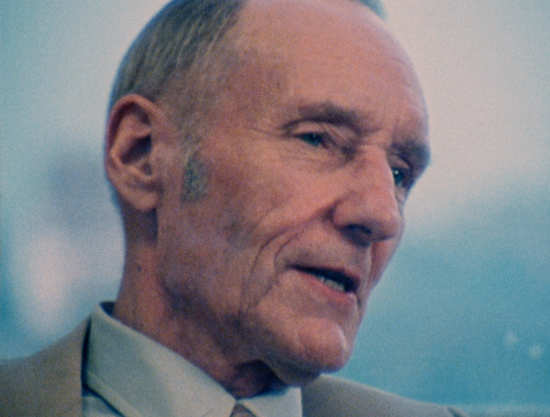
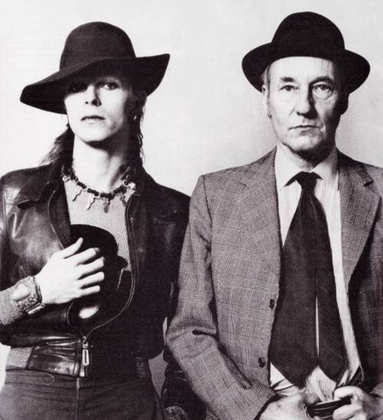
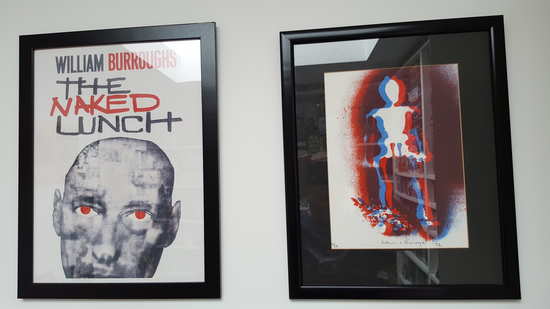
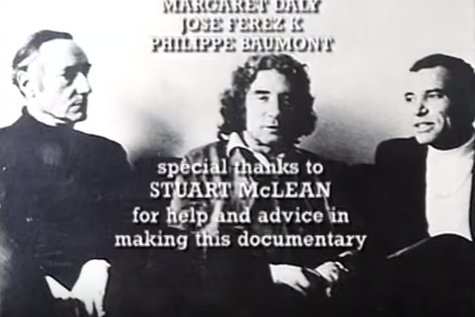
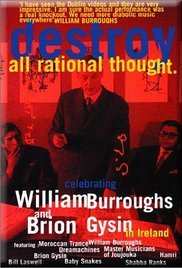


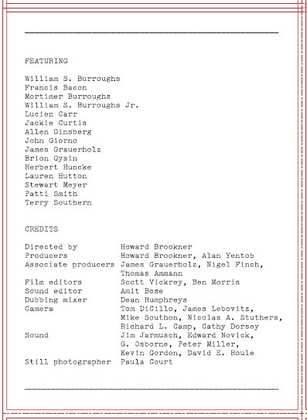
Your Opinions and Comments
Be the first to post a comment!